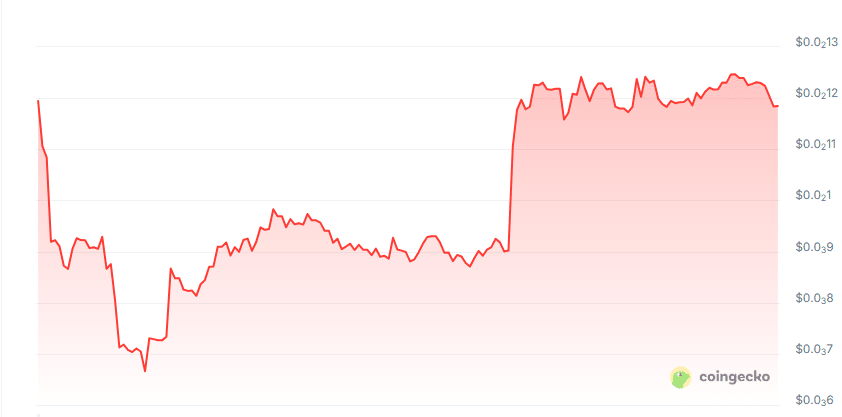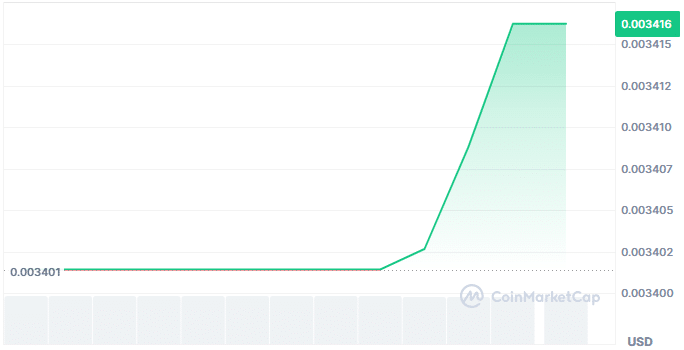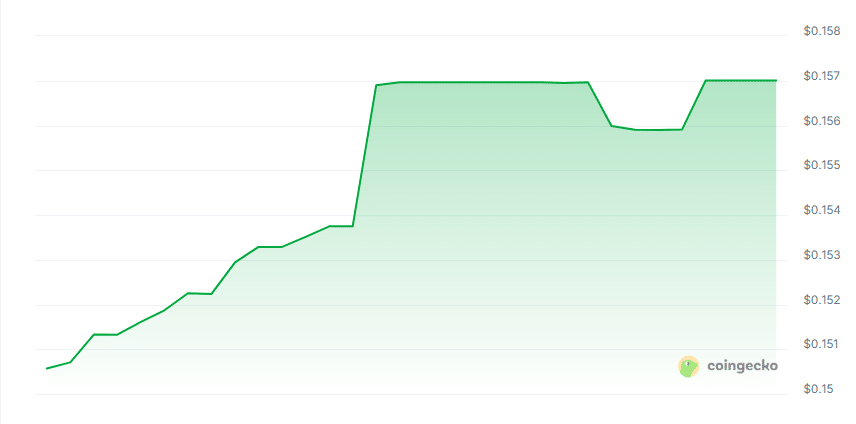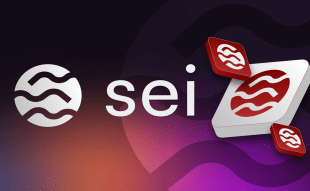Join Our Telegram channel to stay up to date on breaking news coverage
Bitcoin retreated to $109,000 Monday amid sluggish Memorial Day trading, affecting sentiment toward new crypto listings. Uniswap surged 6.6%, while Chainlink and Avalanche gained over 3% following Trump’s tariff delays. Short-term holders recently realized $11.4 billion in profits, creating potential selling pressure on markets.
Strong ETF inflows totaling $5.3 billion in May demonstrated continued institutional confidence despite volatility. Bitfinex analysts suggest Bitcoin may enter a choppy trading phase as investors digest recent gains. Market observers anticipate a potential resumption of the uptrend in the third quarter following the consolidation.
New Cryptocurrency Releases, Listings, & Presales Today
Solaxy enhances Solana’s scalability with roll-up tech, enabling real-time, cost-efficient decentralized application performance. Its new token launchpad, Igniter, allows seamless project deployment, expanding Solana’s ecosystem for developers worldwide.
1. Solaxy ($SOLX)
Solaxy enhances Solana’s capabilities as a Layer 2 blockchain, delivering superior customization, efficiency, and performance for high-frequency decentralized applications. Its roll-up architecture effectively mitigates Solana’s issues like network congestion and failed transactions. Furthermore, it amplifies Solana’s high throughput for seamless scalability. For instance, Solaxy supports meme coins and gaming applications requiring real-time interactions. Additionally, it ensures low-latency financial applications with cost efficiency. Hence, Solaxy significantly strengthens Solana’s infrastructure. As a result, it fosters robust, scalable, decentralized solutions.
Solana’s network congestion and unreliable transactions during peak traffic limit its scalability for expanding applications. Solaxy’s Layer 2 solution reduces bottlenecks by processing transactions off-chain while leveraging Solana’s security. Moreover, failed transactions disrupt user experiences and hinder adoption. For example, Solaxy’s rollup architecture ensures reliable transaction processing under heavy loads. Additionally, scalability limitations restrict Solana’s ability to support growing ecosystems. Therefore, Solaxy enhances transaction reliability and network capacity. As such, it enables seamless performance for diverse applications.
Solaxy’s rollup-based Layer 2 blockchain enhances Solana’s infrastructure by processing transactions efficiently while maintaining security. Its architecture reduces congestion, ensuring consistent, reliable transaction execution. Furthermore, it supports Solana’s high throughput, enabling scalability for expanding ecosystems. For instance, Solaxy processes transactions off-chain, securely settling them on Solana’s Layer 1. Moreover, it effectively optimizes performance for high-frequency decentralized applications. Hence, Solaxy delivers a robust solution for Solana’s limitations. As a result, it supports seamless, scalable blockchain operations.
Introducing: Igniter Protocol 🔥
We’re excited to officially announce Igniter — Solaxy’s native token launchpad protocol. Igniter gives $SOLX holders the power to create, launch, and bootstrap their own tokens directly on the Solaxy rollup.
This is more than a launchpad. It's… pic.twitter.com/DhNIguaPct
— SOLAXY (@SOLAXYTOKEN) May 22, 2025
Recently, Solaxy announced Igniter, its native token launchpad protocol for $SOLX holders. Igniter enables users to create and launch tokens on Solaxy’s rollup. This empowers developers to bootstrap projects efficiently.
Solaxy is ideal for high-frequency decentralized applications like meme coin platforms and micro-transaction systems. It supports gaming ecosystems requiring real-time interactions for smooth gameplay. Additionally, Solaxy enables custom financial applications with low latency and cost efficiency. For example, developers can build applications leveraging Solaxy’s scalable infrastructure. Moreover, it ensures reliable performance under heavy network loads. Hence, Solaxy caters to diverse, high-performance use cases. As such, it drives innovation across decentralized applications.
2. ArcadiaOS ($ARCOS)
ArcadiaOS empowers developers to build Web3 and Web2 game prototypes using AI-powered agents for seamless asset creation and deployment. Built on Ethereum, it ensures robust security and interoperability with decentralized applications. Furthermore, it streamlines game prototyping for rapid development cycles. For instance, Arcadia enables creators to integrate token economies and NFT mechanics efficiently. Additionally, it supports scalable game deployment for diverse audiences. Hence, Arcadia makes game development accessible and efficient. As a result, it fosters creativity in gaming ecosystems.
Arcadia’s AI agents compile gaming assets from various protocols, enabling developers to use them immediately. These agents streamline asset creation, reducing development time significantly. Moreover, they support rapid prototyping to meet fast-paced gaming trends. For example, developers can ship products quickly using agent-driven tools. Additionally, Arcadia ensures seamless integration with Web3 features like token economies. Therefore, it enhances developer productivity and creative freedom. As such, it simplifies complex game development processes.

Arcadia enables seamless game deployment with fully functional prototypes that are ready for cloud hosting. Its AI agents effortlessly integrate Web3 features like NFT mechanics. Furthermore, prototypes are packaged for ready-to-play distribution, benefiting developers and players. For instance, Arcadia supports scalable deployment for diverse gaming audiences. Moreover, it ensures compatibility with Ethereum’s secure infrastructure. Hence, Arcadia simplifies the transition from prompt to product, enhancing game creators’ accessibility.
Arcadia’s Web3 contract generation allows AI agents to apply decentralized contracts to game prototypes. This enables developers to create game-fi products with token-based economies. Additionally, it supports interoperability with Ethereum’s vibrant application ecosystem. For example, developers can integrate NFT mechanics into prototypes seamlessly. Moreover, Arcadia’s AI-driven approach reduces technical barriers for creators. Therefore, it fosters innovation in game-fi development. As such, it empowers developers to build scalable gaming solutions.
Arcadia has partnered with Creo Engine, a community-driven gaming ecosystem with interoperable assets. This collaboration enhances Arcadia’s ability to deliver scalable gaming solutions. It strengthens developer access to innovative tools.
3. Skyops ($SKYOPS)
Skyops leverages unused GPU power worldwide to reduce AI development costs by 70%, democratizing access for developers and researchers. Its decentralized network connects idle GPUs, enabling owners to earn from unused resources. Furthermore, it automates infrastructure management for seamless computing job execution. For instance, Skyops provides flexible access to high-end GPUs for diverse workloads. Additionally, it ensures enterprise-grade security and scalability for users. Hence, Skyops fosters an inclusive AI development environment. As a result, it transforms computing resource accessibility.
High AI development costs, often millions, restrict innovation to large tech companies, excluding smaller organizations. Skyops’ decentralized GPU network slashes costs by 70%, enabling broader participation. Moreover, idle GPUs in gaming PCs operate below 20% capacity, wasting potential. For example, Skyops allows owners to monetize this unused power effectively. Additionally, managing GPU infrastructure requires significant technical expertise, which Skyops automates. Therefore, it simplifies access to computing resources for all users. As such, it creates an efficient AI development marketplace.

Skyops provides computing power for training large AI models without massive infrastructure investments. Researchers can seamlessly access GPUs for complex simulations like climate modeling. Furthermore, it supports efficient processing of large datasets for video rendering tasks. For instance, organizations scale AI development without costly hardware purchases. Moreover, Skyops offers flexible access to various GPU types on demand. Hence, it removes financial and technical barriers for users. As a result, it enables innovation across diverse AI applications.
New week, new drops. It’s Monday and we’re launching big things in the Skyops dApp. ⚙️
🧠 You can now interact live with our first deployed AI models:
→ Meta-Llama
→ Deepseek-AIAvailable in the AI Explorer > Text section.
We've also introduced iSKYOPS — a new in-app credit… pic.twitter.com/eT4bKGRUwO
— Skyops Labs (@SkyopsLabs) May 26, 2025
Recently, Skyops launched Meta-Llama and Deepseek-AI models in its dApp’s AI Explorer Text section. Users can interact live with these deployed AI models. Also, their new iSKYOPS credit unit facilitates payments across Skyops applications.
Skyops connects GPU providers with developers, creating an efficient marketplace for computing resources. Its network supports scalable AI workloads with enterprise-grade security. Additionally, GPU owners generate passive income by sharing idle resources. For example, Skyops enables instant resource scaling without infrastructure management. Moreover, it makes high-end GPU access affordable for individual developers. Therefore, it fosters a shared computing utility model. As such, it drives accessibility in new crypto listings for AI development.
4. Session Token ($SESH)
Session Token offers a decentralized messenger for private, secure, and anonymous communications accessible to average users. It supports direct messages, group chats, and voice calls with open-source software. Furthermore, it prioritizes user privacy without requiring personal data like emails or phone numbers. For instance, Session avoids centralized infrastructure, reducing metadata collection risks. Additionally, it ensures end-to-end encryption for all communications. Hence, Session provides robust privacy protections for users. As a result, it fosters secure, anonymous communication globally.

Recently, Session completed its migration to Arbitrum, supporting over 1.5 million users. It now operates 1,500+ decentralized nodes for secure message routing. This migration strengthens its decentralized messaging capabilities.
.@session_app → @arbitrum migration: COMPLETED ✅
🛡Fully decentralized, secure messaging.
📊 1,500+ nodes storing and routing messages.
👥 1.2 million users and counting.
By running and contributing to Session nodes, you can power a decentralized messaging revolution.
— Session Token (@session_token) May 21, 2025
Many messaging apps lack proper privacy protections despite offering excellent user experiences, compromising user data. Session addresses this with end-to-end encryption for all communications automatically. Moreover, apps like Telegram require the identification of information and the de-anonymization of users with service providers. For example, Session eliminates sign-up data collection, enhancing user anonymity. Additionally, centralized infrastructure in other apps enables sensitive metadata logging. Therefore, Session’s decentralized network minimizes third-party access risks. As such, it ensures private, secure messaging for all.
Read More
Best Wallet - Diversify Your Crypto Portfolio
- Easy to Use, Feature-Driven Crypto Wallet
- Get Early Access to Upcoming Token ICOs
- Multi-Chain, Multi-Wallet, Non-Custodial
- Now On App Store, Google Play
- Stake To Earn Native Token $BEST
- 250,000+ Monthly Active Users
Join Our Telegram channel to stay up to date on breaking news coverage


